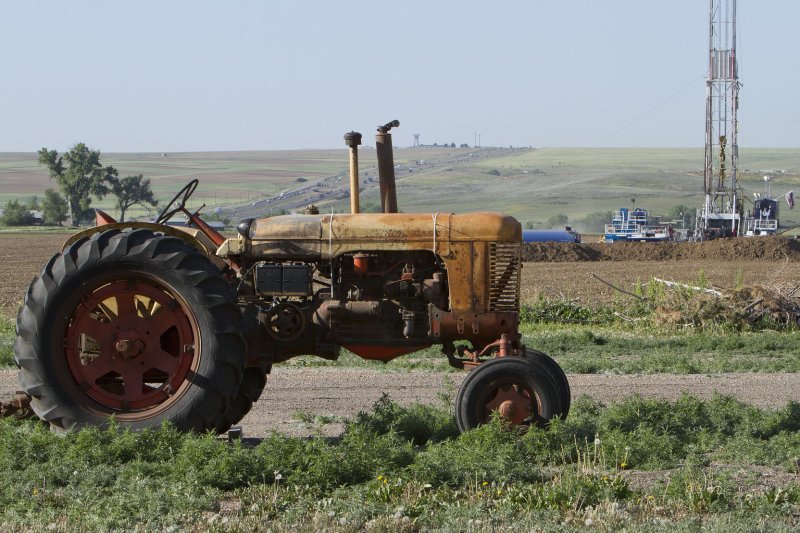U.S. supermajor Chevron said it was focusing on shale opportunities in Texas, but allocating slightly more capital to projects already underway in Kazakhstan. File photo by Gary C. Caskey/UPI |
License Photo
Dec. 7 (UPI) -- While lauding the opportunities in the Permian shale basin in Texas, Chevron said it would spend more on projects already underway, such as in Kazakhstan.
Chevron said it planned to spend $18.3 billion next year on exploration, adding it was focused on the growth potential in the Permian shale basin in Texas.
"With production currently exceeding guidance in the Permian, our 2018 plan should deliver both strong production growth and solid free cash flow, at prices comparable to what we've seen this year," Chairman and CEO John Watson said in a statement.
In its latest drilling productivity report, the U.S. Energy Information Administration put the Permian shale basin at the top in terms of U.S. shale oil producers, far exceeding output from the Bakken shale basin in North Dakota. Production from the Permian shale is expected to increase by about 2 percent from November to 2.68 million barrels per day.
Chevron said $3.3 billion was targeted at the Permian shale, with another $1 billion set aside for other shale investments. About $5.5 billion, however, would go to projects already underway, including $3.7 billion for future growth from the Tengiz oil field in Kazakhstan.
The U.S. Energy Information Administration reported in an updated country profile for Kazakhstan that the landlocked Central Asian country last year reached major milestones with oilfield developments.
In October, the giant Kashagan field resumed production following several years of delays. At its peak, Kashagan should produce at least 370,000 barrels per day. In July, a consortium managing the Tengiz reservoir "decided to proceed with expansion plans that should increase liquids production at the Tengiz project by about 260,000 barrels per day beginning in 2022."
Meanwhile, monthly data from the Texas Railroad Commission, the state's energy regulator, reported a preliminary rate of 2.3 million barrels per day for total oil production in September, the last full month for which it published data, lower than the same month last year by 3 percent.
Chevron's overall spending target, meanwhile, is about 4 percent lower than last year. The company has been on a divestment spree for much of the year. Anglo-Swiss multinational Glencore was the latest to take the company's assets, spending close to $1 billion to buy most of Chevron's assets in South Africa in October.
In August, French energy company Total said it was able to "capture" more opportunities in the Gulf of Mexico through an agreement with the company. With the deal, Total said it was expanding its footprint in deep U.S. waters by gaining between 25 percent and 40 percent participation in the prospects in question.
In a ranking by S&P Global Platts of top financial performers, Chevron was ranked 121, down 104 spots from last year.















